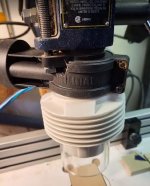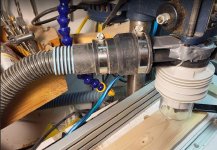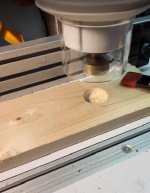ChuckS said:
Are you saying that the Festool retailers wouldn't sell filters that are 5 years past their manufacture date?
No, but 10 yrs old PET ones ... probably not ... should not at least. The paper (aka celulose) ones common in Europe may be fine for decades though.
If the filter stays in the relative heat of a retailer shop for 2-3 years, then 5ys assumed in the vac, that is already aproaching 10 yrs. If one stored it 5 yrs on top of that in a shop ... it starts to add up so we are at 20yrs not even realising it.
My point is that buying, say, 10 yrs in advance is not a good strategy for the main filter. I would rather swap it after 5 yrs, even if not obviously damaged.
One needs to be also conscious of the foam insulating the filter ... I believe it is similar stuff as on the sander pads which degrades not in a year, but in a decade for sure. I have a filter here from a used vac that is from 2011 (the vac) and the main filter is certainly newer. Yet the foam is already clearly degraded, even if it is still holding up kinda ok, I would not want to put it in a vac for next 5 yrs. not without periodicaly checking it out.
The "issue" with PET filter is the fibres inside the filter are very small, so they will lose function way way sooner than a PET bottle will or that it is visible. Would love to see an official Festool test report on this from a lab ... can dream.
[smile]
ADD:
Anyway, the discussion was whether to replace the main filter after a year of use *irrespective* of its state. My position is that such is an extremely safety-focused position that is just not justified.
All I say is that IF I were doing a general rule - say in a commercial shop - I would first focus on
a) ensuring no idiot will compressed-air or water clean the main PET filters
b) ensuring the folks are told to check the main filter in case of any suspicion and at least once a year during regular big maintenance
c) get a policy that - should all seem fine - the main filters should be swapped each 5 years (for vacs operated with bags)
Now, does it mean I believe every filter should be replaced after 5 years? No!
But if there was any time-policy to make, like for a commercial setting, I would lean on 5 years instead of the Festool-recommended 1 year which seem overly aggressive. That closely relates to how long to store a filter after purchase ... as if it is expected to be 5yrs in the vac, the notion of having (multiple) spares quickly becomes tricky vis-a-vis the total age of these.



